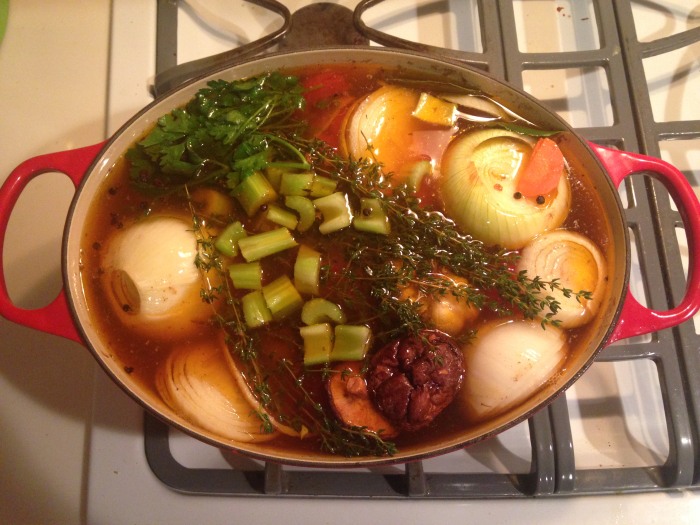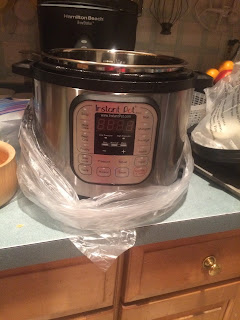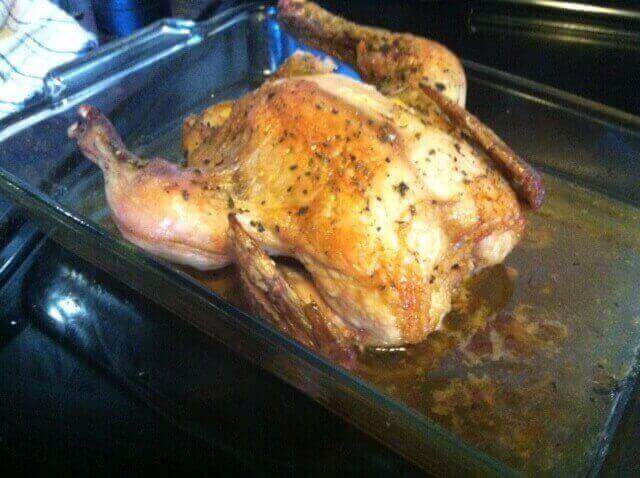Dr. Cremers’ New Favorite Recipe: Bone Broth
After years of hearing about this, my friend Angela has finally convinced me to take the plunge. Also an office “weight loss” competition did not hurt either.
I’ve finally started making and having my own bone broth. Yes the kids rebelled at first but they loved my first introductory attempt tonight: I did not follow the recipe (#2 below) perfectly but found that recipe #1 was faster to make and easier though it may not have the “soup of nutrients” for which bone broth is said to give. I’ll try recipe #2 after Thanksgiving this week.
I’m still working out the kinks, but #1 is a a great recipe to start out with. I added some canned chickpeas & 1/2 cup of split peas into a 10 quart pot with some turkey legs and thighs. We added 6 carrots, chopped onions, garlic, 3 whole tomatoes, and a great deal of spices. Everyone loved it.
#2 is the real deal: the simmering for 24-48hr which I have yet to do. My friend suggested I use the Instapot, though am still hesitant to add another appliance to my kitchen. Will likely try a pressure cooker soon. #2 is purportedly better.
12/3/2015: I finally bought the Instapot. Really did not want to buy it initially as it is big and had little counter space. But am so thankful I did. We have been having soup everyday since we opened it.
12/3/2015: I finally bought the Instapot. Really did not want to buy it initially as it is big and had little counter space. But am so thankful I did. We have been having soup everyday since we opened it.
Here is what it looked like when we first took it out. Yes, you have to remove it from the plastic before turning it on.
So what are the studies on bone broth? There is little published material I could find on PubMed except one from a Dr. Fletcher FEB. 12, 1949 in the British Medical Journal who notes that Bone Broth is rich in Fluoride.** That is all I could find on PubMed under “Bone Broth”.
I’ll try to publish more “hard data” on bone broth if I can find it, as its concepts from a medical point of view: the promise to reverse cavities, etc, are interesting to say the least—even if not published yet in peer reviewed papers ideally with a double blinded (how would you do that with bone broth—maybe recipe 1 vs recipe 2?) controlled studies.
Sandy Cremers, MD, FACS
Not sure what this is for that came with the Instapot: have look this up when I have time.
We are all very happy making a Bone Broth, Broccoli, Baby Bok Choy Soup: it is a very forgiving soup.
So here is my first attempt at Bone Broth. I was really worried that I was going to mess it up, but found it delicious even not using everything in the original recipes below.
Dr. Cremers’ 1st Attempt to Make Bone Broth, Broccoli, Baby Bok Choy Soup in an InstantPot:
This was a great recipe after Thanksgiving as we could use the bones to make broth for 8 days.
Ingredients:
- Whatever turkey bones we had left over: had some with meat left on the bone; some with skin; did not seem to matter condition of bones.
- 2 small, medium, or large onions, peeled and quartered: a friend says you do not need to peel the onions as the peel has nutrients (I have to trust her on this as I have not done a literature search on this, but I believe her as it makes sense: I assume you should wash the outside peel well & remove any/all dirt). I peeled mine as I planned to eat the contents & not just the broth
- 4 large scrubbed clean carrots: I keep mine whole and don’t “smash” them till end.
- 4 stalks celery, cut into 1-inch pieces: did not have celery so did not use: still turned out great.
- 1/2 bunch flat-leaf parsley and/or rosemary and/or cilantro: some recipes say to tie it up with whatever other herbs you have: I will do this next time as I put whole long twigs of rosemary and parsley & this became strings of herbs at the end and was hard to remove at he end.
- 3 head garlic, halved crosswise: did not matter if made small or left big
- 1 tsp. black peppercorns
- 2 bay leaves: only had 1 bay leaf.
- Fill InstantPot to line inside the metal bowl saying “MAX”
- 1 teaspoon Apple Cider Vinegar: this is supposed to help leach the nutrients out of the bone: still looking for proof on this but put it in the first time. I did not use it a second time I used it and did not notice a real difference in the taste
- Salt if desired: I once forgot to put any salt & just put it at the end and tasted the same to me: but again have to see if the salt helps draw out nutrients from the bones better.
- Pepper as needed
- Baby Bok Choy: had some on hand so cleaned & cut the Bok Choy so cut away dark end (sent to compost), cut white part & put that in the InstantPot at the beginning. I cut the green leaves in the InstantPot after it had finished about 15 minutes. I loved it this way but my husband said he would have preferred it cooked longer so next time I’ll put it in 30 minutes before serving.
- Broccoli: similarly I put some small pieces of broccoli florets 15 minutes before serving. Some may want the broccoli a little softer. The stem can be cleaned & put in the InstantPot at the beginning.
I did not have the following called for in initial recipe.
- 1 bunch fresh thyme: did not have;
- 12 oz. can tomatoes, drained: did not have
Method:
Plug in InstantPot
Push “Soup” button and that is it.
I did push the “Soup” button again to equal 1 hour. I’m still doing research to see what is the idea time with the InstantPot or pressure cooker to get the most nutrients out of bone broth.
That is it.
I have left the same bones in the metal pot and just added water to the “MAX” line everyday (with or without salt, or extra apple cider vinegar, or extra items on hand) for the last 4 days and having delicious results.
Let me know if you have any recommendations on making my bone broth a more nutritious soup.
Sandy
Original recipes:
#1.
#1.
(Adapted from A Good Food Day, by Marco Canora)
Ingredients:
- 4 lbs. chicken bones (any combination of backs, necks, and feet)
- 2 lbs. beef bones (shin or neck)
- 2 small onions, peeled and quartered
- 4 small carrots, cut into 1-inch pieces
- 4 stalks celery, cut into 1-inch pieces
- 1/2 bunch flat-leaf parsley
- 1 bunch fresh thyme
- 12 oz. can tomatoes, drained
- 1 head garlic, halved crosswise
- 1 tsp. black peppercorns
- 2 bay leaves
 Meena Duerson / TODAY
Meena Duerson / TODAY
A batch of bone broth simmering on the stove.
Directions:
- Combine bones in a deep 8-quart pot.
- Rinse with cold water, scrubbing with your hands.
- Drain and pack bones in pot.
- Cover with 4 inches of cold water and cook over medium-high heat for about 45 minutes until liquid boils.
- Reduce heat to medium and move pot so burner is off to one side. (This helps broth to circulate.)
- Simmer until broth looks clear, about 1 hour, occasionally using a ladle to skim off surface fats and foamy impurities.
- When broth looks clear, add remaining ingredients and simmer for an additional 2 hours.
- Use a spider skimmer to remove and discard bits of meat.
- Put a fine-mesh strainer over another large pot and pour broth through it; discard solids.
- Drink immediately, or let cool before storing. Makes 2 1/2 quarts.
#2. http://wellnessmama.com/5888/how-to-make-bone-broth/









